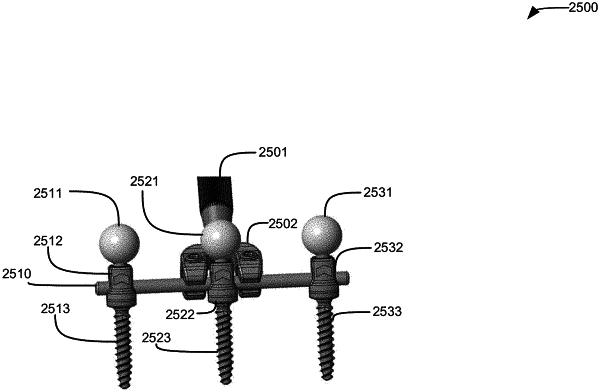| CPC A61B 34/10 (2016.02) [A61B 17/7086 (2013.01); A61B 34/30 (2016.02); G16H 20/40 (2018.01); G16H 30/20 (2018.01); A61B 17/7001 (2013.01); A61B 2017/00119 (2013.01); A61B 2017/564 (2013.01); A61B 2017/681 (2013.01); A61B 2034/104 (2016.02); A61B 2034/2065 (2016.02); A61B 2562/0261 (2013.01)] | 18 Claims |

|
1. A surgical navigation system for defining and implementing a surgical navigation plan to correct a deformed spinal alignment, comprising:
at least one imaging device configured to capture image data;
a surgical navigation computing device in communication with the at least one imaging device, said surgical navigation computing device comprising a processor and a memory, said processor is configured to:
obtain a first set of image data associated with a deformed alignment in a spine of a patient from the at least one imaging device;
process the first set of image data to identify a set of deformed alignment parameters associated with the deformed alignment;
identify a set of corrected alignment parameters associated with a preferred alignment of the spine of the patient;
process the first set of image data, the set of deformed alignment parameters, and the set of corrected alignment parameters to generate a correction plan to surgically manipulate the deformed alignment to the preferred alignment; and
provide navigation through the correction plan to facilitate surgical manipulation of a patient spine from the deformed alignment to the preferred alignment; and
a strain gauge sensor attached to a rod link reducer, wherein the rod link reducer is applied to manipulate the patient spine from the deformed alignment to the preferred alignment, wherein the strain gauge sensor is in communication with the surgical navigation computing device.
|